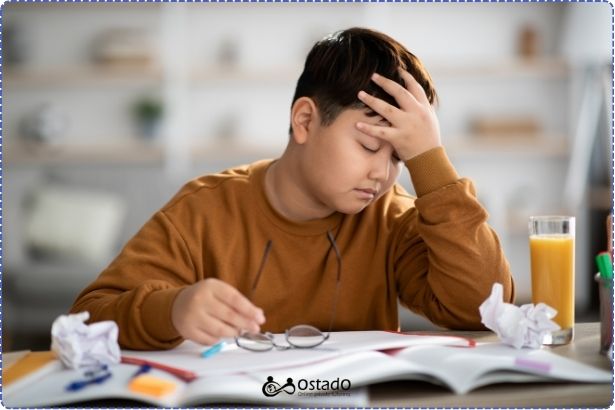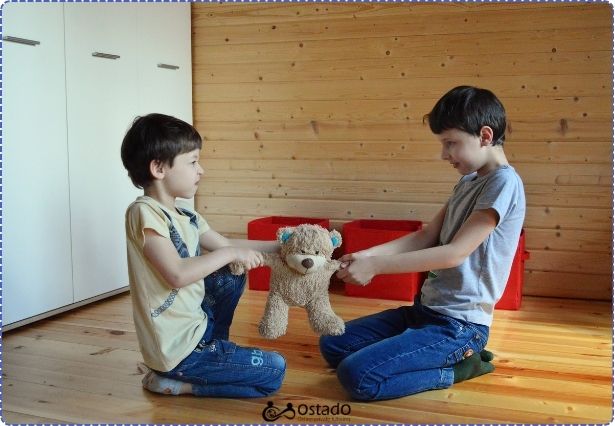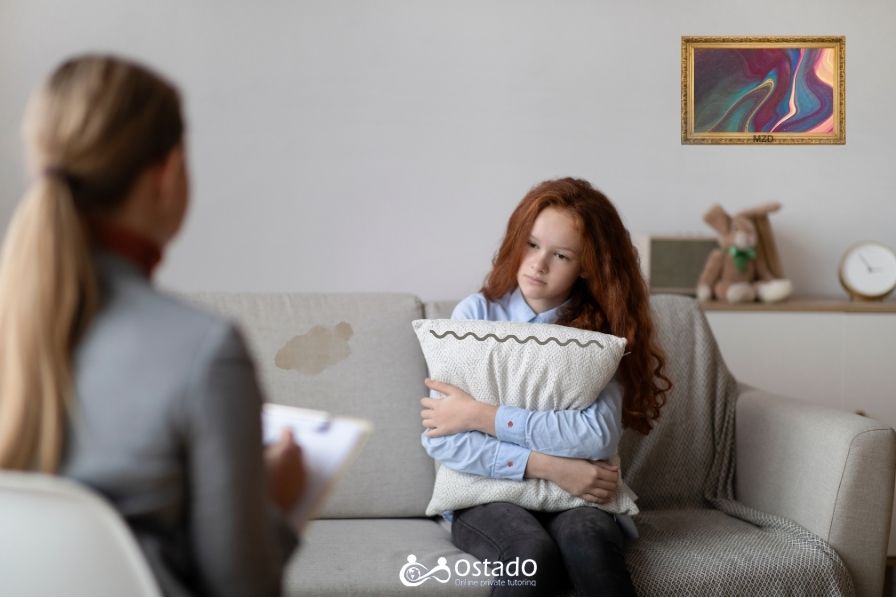Has your child been more distant recently? Are your attempts to talk to them equivalent to blowing a fuse? Well, this might just be a cry for help. Your child might be entangled by anxiety if you observe the following signs in their behaviour. But there’s nothing to worry about, given that you identify these anxiety signs soon enough and implement an intervention.
1. Physical Symptoms You Might Be Overlooking

Anxiety triggers the body’s fight-or-flight response by releasing more adrenaline. The physical symptoms of anxiety can appear as follows:
- Frequent headaches or stomach aches caused by muscle tension and digestive issues
- Sleeping disorder leading to insomnia or frequent waking
- Increased heart rate due to the release of adrenaline
- Sweating as a response to stress
- Chronic fatigue caused by heightened alertness
Knowing that these symptoms are typical of anxiety is a good starting point to try and eliminate them. Remember that you need to identify what’s making your child anxious in the first place rather than trying to cure the symptoms.
Solution
Exercising is an effective anxiety reliever. You can go bike riding with your child or take a stroll in the park. Not only does exercise relieve stress, but it also improves sleep. You can also teach your child about breathing exercises and progressive muscle relaxation.
2. Unusual Behaviour Changes

Another prevalent sign of anxiety in a child is a radical change in their behaviour. For instance, all of a sudden, your child might lose interest in their favourite hobby or avoid their buddy for no apparent reason.
Avoidance behaviour is a coping mechanism that adolescents might employ to avoid overwhelming situations. So, if you realise that your child doesn’t want to go to school, hang out with friends, and go to social gatherings, anxiety might be at play.
Solution
These radical changes in behaviour are sometimes the result of piled-up unexpressed feelings. You can make a habit out of talking to your child on the weekends while spending time in their hangout spot.
Keep in mind that if you want this solution to work out, you need to avoid judging them. Instead, try to validate their feelings even if they seem small to you.
3. Emotional Outbursts Over Small Things

If you constantly find your children one comment away from losing it, they might be dealing with anxiety. Of course, this emotional meltdown can also appear as crying immediately after something (no matter how trivial) goes wrong.
The cause of these reactions is that anxiety shrinks your child’s emotional bandwidth, and once it happens, even minor stressors can drive them up the wall. Therefore, if you notice your child rages out over something like a delayed meal, new food, loud noise, or a cancelled play date, you should look for reasons that have made them anxious.
Solution
When an emotional outburst happens, you need to keep your cool. Let your child get clear-headed. Then, create a favourable setting, say, cook their favourite meal, and gently open up a conversation about what made them lose their composure.
4. Difficulty Focusing or Concentrating

Another sign of anxiety is your child’s struggle with following instructions or inability to stay focused. This is caused by hypervigilance. When your child is hypervigilant, they are constantly scanning their environment for threats. As a result, the brain resources are spent elsewhere rather than the task at hand.
It can also manifest itself in your child’s academic performance. That is, they lose the motivation to study or sitting in a class becomes too much of a burden. In this case, a private tutor can root out the problem and provide professional and personalised care and support.
Solution
One of the main reasons why your child can focus on a task is because they don’t know what’s expected from them or they don’t know how to get the task done. Therefore, you can help them devise a plan and set steps they need to take in order to get the job done.
You can also organise the housework to minimise distractions. For instance, avoid vacuuming when they’re doing their homework or try to sleep early.
5. Constant Worrying or Fearing the Worst

Anxiety can also reveal itself in the form of constant worrying that fills your child’s mind with worst-case scenarios and future concerns. In other words, their mind becomes so preoccupied with what-ifs that they can’t plan to do anything.
Moreover, constant worrying can lead to fearful thinking. That is, your child catastrophises every situation by imagining back-breaking outcomes. For example, they might think a small argument with a friend means their friendship is over. To alleviate these negative thoughts, they might seek constant reassurance from you, their siblings, and even their teachers that everything will be fine.
Ironically, most of these worries are only in the child’s imagination and are not likely to happen. In fact, the findings of a study by researchers at Penn State University show that a significant percentage of our worries do not materialise, at least in the short run.
A whopping 91 percent of worries were false alarms. And of the remaining 9 percent of worries that did come true, the outcome was better than expected about a third of the time. For about one in four participants, exactly zero of their worries materialised.
Click here to read the full article on “How Often Do Your Worries Actually Come True?”
Solution
First and foremost, you should try to get rid of these worries and fears. You can use mindfulness techniques to manage stress and approach challenges.
However, if these fears seem to persist, you should sit down with your child and address them. If the catastrophe was to take place, what would be the solution? You should teach them not to jump to conclusions and take a more flexible stance when facing challenges.
Doctor-Recommended Treatments to Help Your Child Manage Anxiety
So far, we’ve covered five signs that indicate your child is dealing with stress and suggested some solutions you can do as parents to help them. Now, let’s see what doctors have to say about dealing with anxiety in children.
Cognitive-Behavioral Therapy (CBT)
CBT is referred to as the “golden standard” for treating anxiety disorders in children. Through CBT, your child learns how their thoughts, feelings and behaviours are related.
CBT helps children to change their thinking and behavioural patterns by using strategies such as role-playing and problem-solving.
For instance, if the child is constantly worried about failing the exams, the therapist can simulate the hypothetical situation where the child has actually failed the exam. Then, they can deal with the problem and weigh their options. This allows the child to understand that their worries are a burden, which makes it even more difficult for the child to succeed in the exams.
Exposure Therapy
Exposure therapy is a kind of talk therapy where the therapist tries to identify the situations that induce anxiety. Once these situations are located, the therapist gradually exposes the child to the situation in a controlled and safe environment. This process alleviates anxiety over time.
In addition, doctors recommend that parents participate in therapy sessions to understand their child’s conditions and respond to their needs appropriately.
Medication
In some cases where the anxiety is severe, CBT isn’t enough. The most common medications for anxiety treatment are Selective Serotonin Reuptake Inhibitors (SSRIs), such as Zoloft and Prozac. This medication can regulate mood by increasing serotonin levels in the child’s brain and provide quick relief.
Disclaimer: the content of the article is intended to help parents understand whether their child struggles with anxiety. The information here is not medical advice. Please consult an expert if you observe severe signs of anxiety in your child’s behaviour.

